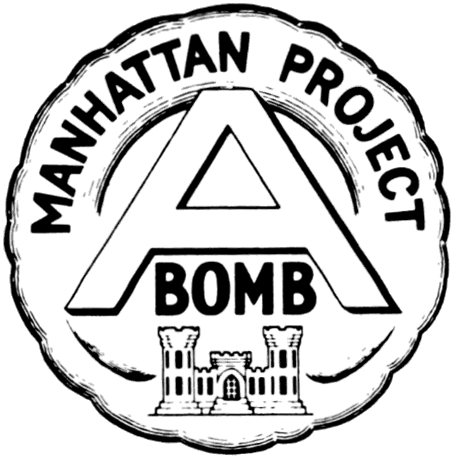The Manhattan Project
- Keli Ganey

- Apr 1, 2021
- 2 min read
Updated: May 3, 2021
Many do not realize that, "He started it," is not only a phrase used by rowdy, irritable toddlers.
In the case of the creation of the atomic bomb, when seen from America's perspective, Germany started it. The Manhattan Project was birthed out of the fear of Nazi Germany researching nuclear weapons.

Following World War 1, all eyes were on Germany. Many wondered how Germany was going to handle the global smackdown, and some even feared a violent revenge. In 1938, this fear became fact in America when German scientists Otto Hahn and Fritz Strassmann discovered nuclear fission. Just months after this discovery, President Roosevelt received a letter from Albert Einstein and Leo Szilard warning him and the United States that Germany might try to use this new finding to build an atomic bomb. The U.S. government then quickly created a response team of scientists called the Uranium Committee to test the possibility of achieving a nuclear chain reaction. Years later in 1941, the British equivalent to the Uranium Committee, named MAUD, made a breakthrough and affirmed that creation of an atomic bomb was possible.
With this new-found knowledge, America's mission became to create atomic weapons of their own. This top secret mission, coined the "Manhattan Project," was headed up by the Office of Scientific Research and Development and the War Department. (History.com) In fact, the U.S. Army Corps of Engineers led the way in the construction of the testing and development facilities for the classified “Manhattan Project,” named after the engineering corps’ district in Manhattan. Their mission was to create atomic weapons of their own. The Manhattan Project was put into the hands of Major General Leslie Groves to oversee and run the project. The actual scientific creation would come from nuclear physicist J. Robert Oppenheimer, who was the director of Los Alamos Laboratory.
In 1942, feasibility for the first nuclear reactor was achieved at the Metallurgical Laboratory in the University of Chicago, which then became known as the Chicago Pile-1, or the first people to witness nuclear fission. Nuclear fission is the process of atoms splitting and separating. The program’s scientists worked endlessly to produce the materials needed for the first atomic bomb: Uranium-235 and Plutonium-239. These elements were key ingredients for nuclear fission and more importantly atomic weapons. Interestingly, Plutonium-239 was named after the Roman God of the Dead, Pluto as it would be at the heart of the new age of Atomic Warfare. The final product created by the scientists was two shiny hemispheres, one made of Uranium-235 and one of Plutonium-239l. Both hemispheres were made of a nickel-plated metal and were covered in a gold foil that glittered in the sunlight. These pieces were so delicate that they had to travel inside a special two-piece magnesium suitcase fitted with 20 shock-absorbing rubber bumpers. It had taken scientists 6 months to design the case so that it will be ready to carry this delicate cargo to its next stage.
Footnotes:
“The Manhattan Project,” Atomic Heritage Foundation, 2017, https://www.atomicheritage.org/history/manhattan-project#:~:text=The%20story%20of%20the%20Manhattan,to%20build%20an%20atomic%20bomb..
Wikipedia Contributors, “Manhattan Project,” Wikipedia (Wikimedia Foundation, February 28, 2021), https://en.wikipedia.org/wiki/Manhattan_Project#:~:text=The%20Manhattan%20Project%20was%20a,Tube%20Alloys%20project)%20and%20Canada..













Comments